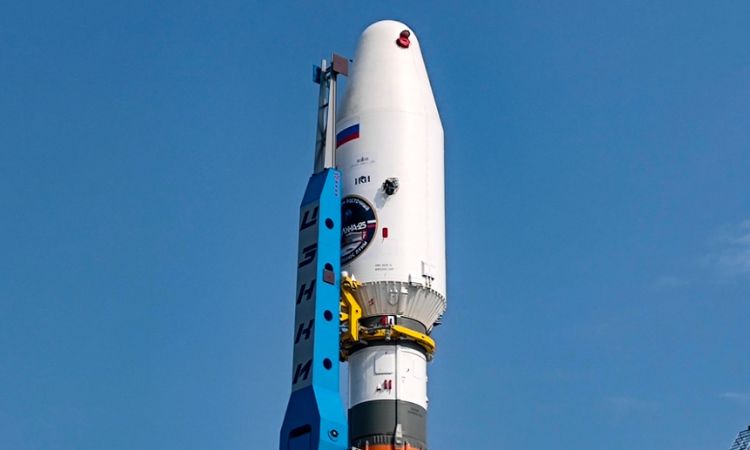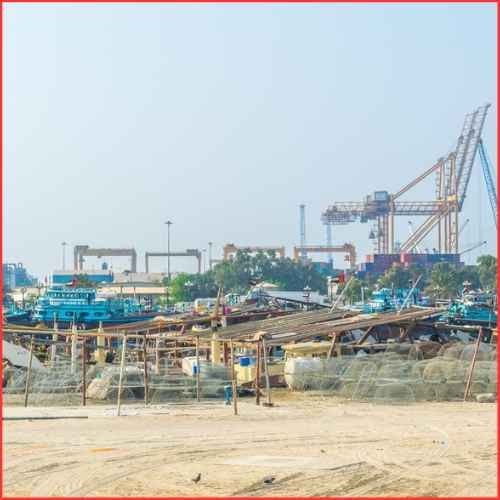Russia’s Luna 25 mission, marking its return, to exploration after a gap since 1976 aims to achieve a soft landing on the south pole of the moon. This ambitious endeavor puts Russia in competition with India, China, and the US. The Luna 25 spacecraft, the size of a car will conduct tests to detect water ice in shadowed craters. This discovery could potentially revolutionize space exploration by providing resources. The anticipated landing is scheduled for, around August 21. Represents Russia’s pursuit of independent space missions following the Ukraine conflict.

After a 47-year pause, Russia launches its first lunar spacecraft on Friday. The aim is to achieve the distinction of making a gentle landing at the lunar south pole, a region thought to contain valuable reservoirs of water ice.
This new Russian lunar mission, the first since 1976, finds itself in a heated competition against India, which deployed its Chandrayaan-3 lunar lander just last month. Moreover, this race extends to encompass global players like the United States and China, both actively engaged in sophisticated lunar exploration programs with their sights set on the same coveted lunar south pole.
The Luna-25 spacecraft, riding aboard a Soyuz 2.1v rocket, ignited its engines at 2:11 a.m. Moscow time on Friday (or 1111 GMT on Thursday) at the Vostochny Cosmodrome, situated 3,450 miles (5,550 km) to the east of Moscow. Guided by its upper stage, the spacecraft exited Earth’s orbit, commencing its trajectory toward the moon over an hour later, a confirmation reported by Roscosmos, Russia’s space agency.
Anticipation surrounds the lunar touchdown, which, according to Yuri Borisov, Russia’s space chief, is expected to take place on August 21. The original landing date had been pegged at August 23 by Roscosmos. Borisov expressed his optimism for a precise and gentle landing during a post-launch gathering at the Vostochny Cosmodrome, instilling hope in the mission’s success.
The Luna-25 module, approximately the size of a compact car, is primed for a year-long operation on the moon’s southern pole. Scientists from NASA and various space organizations have recently discovered indications of water ice within the shadowy craters of this region. This mission holds significant weight, as the Kremlin argues that the Western sanctions imposed over the Ukrainian conflict have been ineffective in crippling Russia’s aerospace sector and economy.
The moonshot venture, which Russia has meticulously planned over the course of decades, serves as a test of the nation’s growing independence in space. This autonomy has become particularly pertinent following Russia’s incursion into Ukraine in February 2022, which led to a rupture in most of Moscow’s space ties with Western nations. Notably, the European Space Agency withdrew its participation in the Luna-25 project following Russia’s involvement in Ukraine, despite initial plans to contribute its Pilot-D navigation camera.
While U.S. astronaut Neil Armstrong’s iconic moonwalk in 1969 remains etched in history, the Soviet Union’s Luna-2 accomplished the feat of reaching the moon’s surface back in 1959. Subsequently, the Luna-9 mission in 1966 achieved the first soft landing on lunar terrain. Moscow then shifted its focus towards exploring Mars. Notably, since the dissolution of the Soviet Union in 1991, Russia has refrained from dispatching scientific probes beyond the Earth’s orbit.
The moon has become a subject of exploration for major global powers, including the United States, China, India, Japan, and the European Union. Yet, the challenging terrain and lack of successful south pole landings add intrigue to the endeavor. The potential payoff, however, is considerable – uncovering water ice, a historic achievement that could offer vital resources such as fuel, oxygen, and drinking water.
Maxim Litvak, who oversees the planning group for Luna-25’s scientific equipment, emphasized the scientific significance of venturing into uncharted lunar territory. He highlighted the presence of ice in the landing area, deduced from orbit data, and stated that Luna-25 would actively conduct research and sample collection during its stay on the moon for at least one Earth year.
Roscosmos detailed the journey’s timeline, estimating a five-day transit to the moon. Afterward, the spacecraft will spend 5-7 days orbiting the moon before descending to one of three potential landing sites near the south pole. This schedule indicates a potentially close contest with its Indian counterpart, Chandrayaan-3, which is slated to conduct experiments for two weeks.
With a weight of 1.8 tons and equipped with 31 kg (68 pounds) of scientific instruments, Luna-25 will employ a scoop mechanism to retrieve rock samples from depths of up to 15 cm (6 inches), all in the quest to confirm the presence of frozen water.















